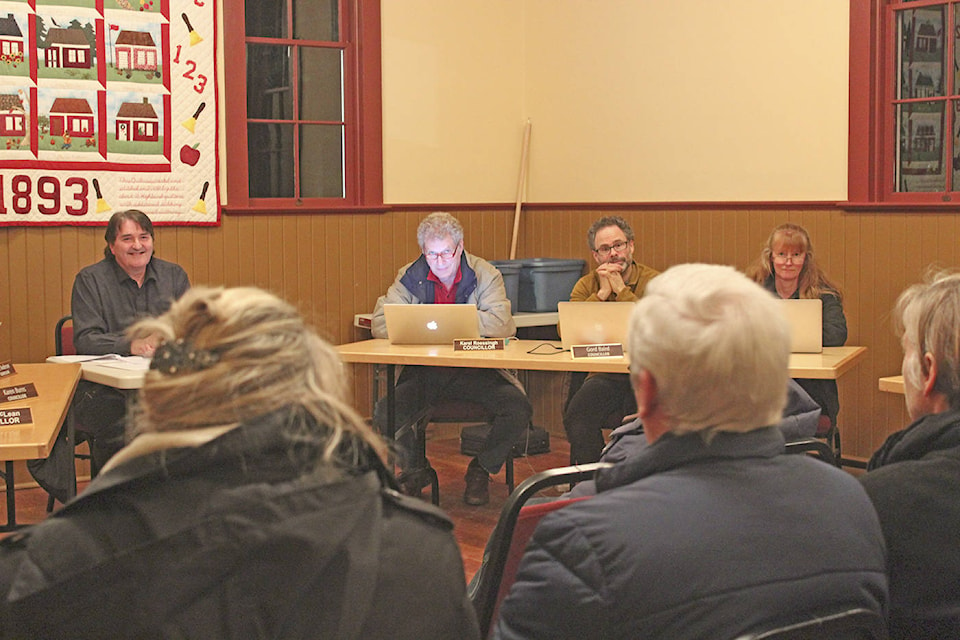Ann Baird has had enough.
Baird is fed up seeing cars rip through the rural roads of the municipality, tired of aggressive drivers and increased traffic using the Highlands as a short-cut to avoid the Trans-Canada Highway, and is upset that kids and can no longer walk to a neighbour’s house in fear they’ll be hit by a speeding car.
That’s why District of the Highlands councillors proposed the idea of branding the municipality a slow community and changing the speed limits to 30 kilometres an hour – district-wide.
“Traffic in the Highlands is something that is becoming more of an issue and community members have been bringing it to our attention that our roads are getting congested,” Baird said. “People don’t feel safe, they’re not going for walks anymore, they don’t walk their dogs. This has been an increasing problem.”
RELATED: Aggressive drivers in the Highlands draws ire of residents
Baird’s idea for a slow community is modelled after the slow food movement in Italy, which began in the late 1980s. The movement was a push back against the fast food industry and encouraged people to spend time with others over a meal, cook food from scratch, eat local and promote community to increase overall quality of life.
“It’s really about quality of life rather than the bigger, better, faster, more mentality that is degrading our lives and our community … it’s a matter of thinking of solutions that are outside the box,” she said, adding decreasing the speed limit would make the roads multi-modal and discourage drivers from using the Highlands as a short-cut.
“We need to take our community back, we have to create a slower environment for people to interact with each other, go for walks, have their kids play.”
RELATED: Highlands eyes speed readers on Millstream Lake, Ross Durrance roads
Speeding in the Highlands, and specifically on Ross Durrance and Millstream Lake roads, has been an issue for several months, and one many expect will only get worse as the population in the West Shore continues to grow.
During Monday’s special committee of the whole meeting, a dozen residents packed the Caleb Pike House to provide input to council on how to deal with the issue. In recent weeks, the West Shore RCMP has stepped up enforcement during peak times, handing out tickets to speeders.
While mayor and councillors are appreciative of the increased police presence, they questioned how much longer it would last. Staff also floated the idea of installing speed readers and speed bumps, however, Baird said those are band-aid solutions compared to lowering speed limits.
At the meeting, several residents and councillors spoke in favour of the district becoming a slow community.
“I think there’s some value to looking at a speed limit revision that takes into account the fact that roads are multi-modal trails – trails for people, trails for bikes, trails for horses, trails for cars,” Coun. Gord Baird said.
Coun. Karel Roessingh also liked the idea, but said community support would be necessary to make such a radical change.
“I think it would have to involve broad community buy-in. We would really have to make sure that everybody is on board with this,” he said. “Education and buy-in would be hugely important were we to consider this.”
Long-time Highlands resident Sally Gose, who started a petition in August calling on the municipality to work with residents to come up with solutions for traffic calming, said she loved the idea of becoming a slow community.
But not everyone agreed. Ian Pattullo, who has lived in the Highlands for the past 10 years, said a slower speed limit is not the answer.
“You start asking people to drive 30 km/h, you’re going to have a line up behind you and the person fourth in line is going to get pissed off and he’s going to do something stupid. He’s going to try and pass at the wrong time, he’s going to put a cyclist in danger because he’s going to lose his patience,” he said. “Trying to force people to go that speed, I just don’t think is reasonable.”
Baird believes slowing down the community is a solution that could potentially work, especially if the District allocates funds to the RCMP to help with enforcement. But public input would be need to move forward.
“That’s something that has to be a community decision,” she said, adding she’s already received emails from residents in favour of the idea. “The community has to decide, do they want to be a slow community?”
In the end, mayor and councillors voted to continue to work with the RCMP on enforcement and ICBC on speed education campaigns.
The idea of a slow community has been sent to the District’s land-use committee that will make recommendations to be sent to the next committee of the whole meeting for consideration.
